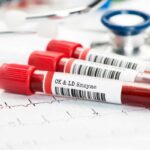Accidents happen when we least expect them. Whether it’s a minor cut in the kitchen or a more severe injury while out and about, knowing how to administer first aid can be the difference between a quick recovery and a prolonged injury—or worse. But what exactly is first aid? Why is it so important, and how can you ensure you’re prepared to provide it when needed? In this comprehensive guide, we’ll explore the essentials of first aid, offering practical advice that could one day save a life.
What Is First Aid?
First aid is the initial assistance or treatment given to someone suffering from an injury or illness. It’s designed to preserve life, prevent the condition from worsening, and promote recovery. While first aid can’t replace professional medical care, it can stabilize the situation until help arrives. From minor burns to cardiac arrest, first aid covers a wide range of scenarios, making it an invaluable skill for everyone.
The Importance of First Aid
You might wonder, “Is first aid really that important?” The answer is a resounding yes. First aid knowledge empowers you to act quickly in emergencies, reducing the severity of injuries and, in some cases, even preventing fatalities. Imagine a situation where someone is choking. Knowing the Heimlich maneuver can dislodge the obstruction, allowing the person to breathe again. Without this knowledge, the outcome could be dire.
Basic First Aid Techniques
1. CPR (Cardiopulmonary Resuscitation)
CPR is a lifesaving technique used when someone’s heartbeat or breathing has stopped. It involves chest compressions and rescue breaths to keep oxygen-rich blood flowing to the brain and other vital organs. Here’s a quick rundown:
- Check Responsiveness: Shake the person and shout to see if they respond.
- Call for Help: Dial emergency services immediately.
- Begin CPR: Place the heel of your hand on the center of the person’s chest, place your other hand on top, and press down hard and fast—about 100-120 compressions per minute.
Remember, if you’re not trained in rescue breathing, focus solely on chest compressions.
2. The Heimlich Maneuver
Choking is common, especially during meals, and can quickly become life-threatening. The Heimlich maneuver, or abdominal thrusts, is a first aid technique that can save lives by expelling the object obstructing the airway.
- Stand Behind the Person: Wrap your arms around their waist.
- Make a Fist: Place it just above the person’s navel.
- Perform Abdominal Thrusts: Quickly pull inward and upward, repeating until the object is dislodged.
3. Treating Burns
Burns can vary in severity, from minor first-degree burns to more severe third-degree burns. Knowing how to treat burns promptly can reduce pain and prevent complications.
- Cool the Burn: Run the burn under cool water for at least 10 minutes. Never use ice, as it can damage the skin.
- Cover the Burn: Use a clean, non-stick bandage or cloth.
- Seek Medical Attention: If the burn is severe, or if it covers a large area, seek professional help immediately.
4. Controlling Bleeding
Uncontrolled bleeding can lead to shock or even death. First aid for bleeding involves stopping the flow of blood and protecting the wound from infection.
- Apply Pressure: Use a clean cloth or bandage to apply direct pressure to the wound.
- Elevate the Injury: Raise the injured area above the heart level if possible.
- Use a Tourniquet: Only if the bleeding is life-threatening and cannot be controlled by pressure.
Creating a First Aid Kit
A well-stocked first aid kit is a must for every home, car, and workplace. But what should be in it? Here’s a basic list:
- Adhesive bandages in various sizes
- Sterile gauze pads and adhesive tape
- Antiseptic wipes
- Tweezers and scissors
- Thermometer
- CPR face shield
- Disposable gloves
- Pain relievers (e.g., ibuprofen, aspirin)
- Emergency contact numbers
First Aid for Specific Situations
1. Heart Attacks
A heart attack occurs when blood flow to a part of the heart is blocked. Quick action is crucial.
- Call Emergency Services: Time is of the essence.
- Give Aspirin: If the person is conscious and not allergic, give them aspirin to chew, which can help reduce damage to the heart.
- Monitor and Provide CPR: If the person loses consciousness, begin CPR immediately.
2. Stroke
Strokes require immediate medical attention, and the FAST acronym can help identify symptoms:
- Face drooping
- Arm weakness
- Speech difficulties
- Time to call emergency services
Quick action can minimize brain damage and improve the chances of recovery.
3. Fractures and Sprains
If someone has a broken bone or sprain, here’s what you should do:
- Immobilize the Injury: Use a splint or sling to keep the affected area still.
- Apply Ice: This reduces swelling and pain.
- Seek Medical Attention: For severe fractures, avoid moving the person unless necessary.
FAQs About First Aid
Q: How often should I refresh my first aid training?
A: It’s recommended to take a refresher course every two years to stay updated on the latest techniques.
Q: Can I administer first aid if I’m not trained?
A: Yes, but it’s always better to have proper training. Even basic knowledge can help in emergencies.
Q: What should I do if I’m unsure about the correct first aid procedure?
A: Call emergency services and follow their instructions. It’s better to do something than nothing.
Q: How do I handle an allergic reaction if there’s no epinephrine available?
A: Try to keep the person calm, monitor their breathing, and seek emergency help immediately. If the person is conscious, help them take an antihistamine if available.
Conclusion
First aid is more than just a skill—it’s a crucial tool that empowers you to save lives and mitigate injuries. Whether you’re treating a minor burn or responding to a cardiac arrest, your knowledge and preparedness can make all the difference. By keeping a well-stocked first aid kit and staying informed about basic techniques, you’ll be ready to act confidently in any emergency.
Authoritative Links:
- American Red Cross: www.redcross.org
- Mayo Clinic First Aid Guide: www.mayoclinic.org
- National Safety Council: www.nsc.org
- CDC First Aid Guidelines: www.cdc.gov







